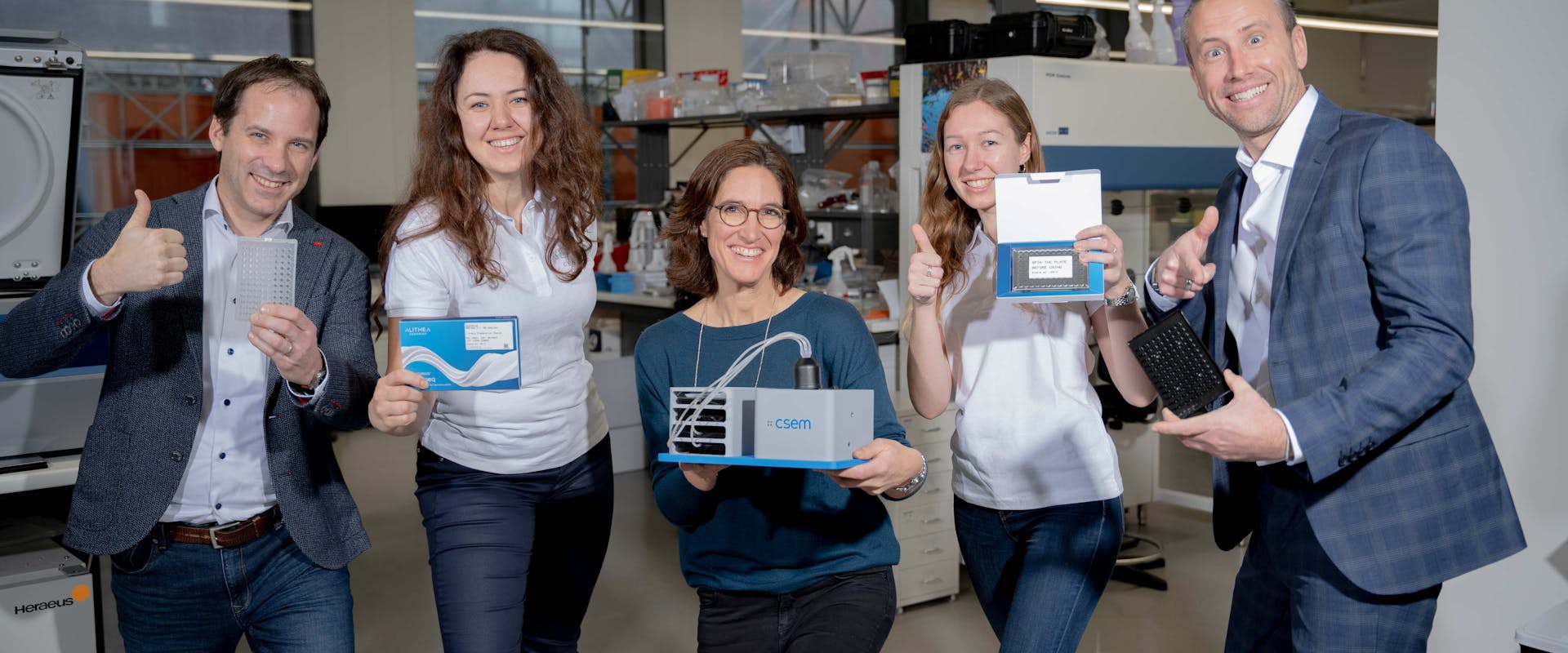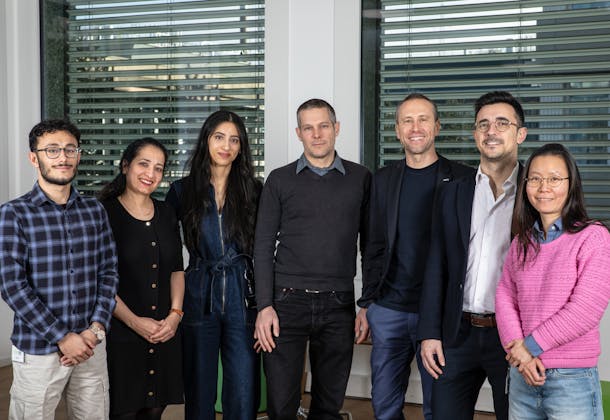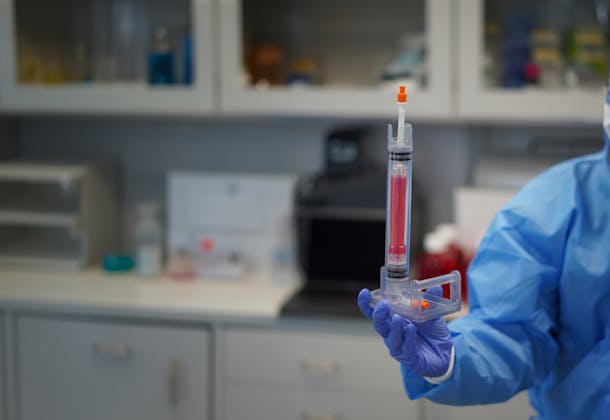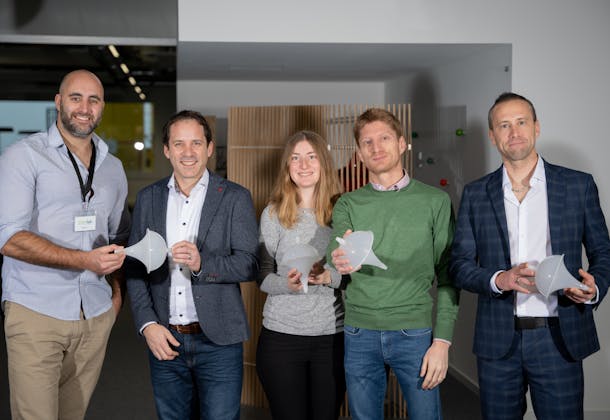May 16, 2023
Democratizing RNA sequencing: A breakthrough in cost and efficiency
CSEM has supported the Lausanne-based start-up Alithea Genomics in developing a technology capable of processing hundreds of ribonucleic acid (RNA) samples in a single tube, which translates to a significant reduction in reagents and manual effort in the overall workflow.

© CSEM - Erfolgreiche Zusammenarbeit zwischen dem Start-up Alithea und dem Schweizer Technologie-Innovationszentrum CSEM (von links nach rechts): Vincent Revol (CSEM, Co-Head Research & Business Development Life Science Technologies), Daria Gudkova (Alithea, Product Manager), Stéphanie Boder-Pasche (CSEM, Senior Project Manager Cell Microtechnologies), Marine Vallez (Alithea, Wissenschafterin in F&E) und Gilles Weder (CSEM, Co-Head Research & Business Development Life Science Technologies). In ihren Händen halten sie ein Alithea-Reagenz-Kit.


